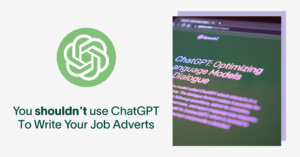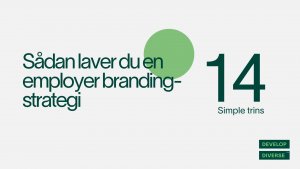In today’s fast-paced environment for business, speed — and deep pockets — are often of the essence when it comes to hiring. And as the market for talent grows increasingly competitive, it’s becoming even harder to turn heads during the recruitment process.
For organisations committed to their DEI goals, recruiting in this environment can be even more challenging. When time-to-hire is so fast, organisations are often faced with an impossible dilemma — hire equitably and inclusively, or risk getting left behind.
In this post, DEI consultant Daniela Herrera explains some best practice tips for attracting candidates from underrepresented groups that will help you build a more diverse and inclusive organisation.
Key barriers to attracting diverse talent
When organisations first get started on their DEI journey, it’s usually with an awareness that their workforce composition is lacking diversity. This sense of urgency to correct the balance often leads organisations to set huge diversity recruitment targets, and work hard to expand their pool of diverse candidates.
But according to Daniela, this hurry to recruit is one of the key barriers that prevents organisations from attracting underrepresented talent in the first place.
“Building strong, intentionally diverse, and inclusive talent pipelines requires time, effort, budget, and commitment,” she says. “When companies and talent teams focus on hiring based on speed and quantity instead of quality and intentionality, all [DEI] sourcing and hiring strategies are left behind.
“Unfortunately, some companies don’t really know how to attract, communicate, interview, and hire talent from historically excluded communities,” she adds. “They have outdated, biased, legacy systems that don’t support or elevate the diverse talent they want to interview and hire.
“[There’s also often a] lack of training, expectations, and accountability for recruiters and hiring managers. Not all recruiters know where to go to look for historically excluded talent.”
Best practice tips for attracting underrepresented talent
Attracting diverse talent in a competitive market isn’t just about building a bigger pipeline — because that alone won’t guarantee that underrepresented folks actually make it into the interview room. Instead, it’s a long-term approach that requires you to re-examine pre-existing biases across your entire recruitment funnel.
Start with your recruitment process.
Over time, biases can easily become embedded at every single stage of your hiring process — especially when they’re unconscious. This is why to stand the best chance of attracting underrepresented talent, Daniela says organisations need to start with their processes, not filling up their candidate pool.
“Ideally, the first step is always to pause and review the processes, systems, and practises the talent acquisition team has in place so they can identify all the biases and un-inclusive practices they’ve been following for years,” Daniela says.
“Once that’s done, it’s important to intentionally start to embed inclusion, equity, and accessibility into the entire talent attraction and recruitment funnel — from where recruiters source talent, to the questions they ask during the process, how feedback is written and presented, and how and why hiring decisions are made.”
Build authentic employer branding that focuses on relationships.
After examining their recruitment processes, organisations should turn their attention to how their brand resonates with folks from underrepresented groups. Sometimes, Daniela says, this hinges more on being open about how you’re trying to improve DEI — even if you’re not the finished article (and no organisation ever is).
“Organisations need to be honest with their efforts, commitments, and advancement,” Daniela says. “Something relatively easy to do and implement is sharing their current and past [DEI] data, even if the numbers don’t always represent the efforts and goals. Something else that’s very valuable is making sure that the company website is accessible for candidates with disabilities.”
But it’s not just about how your employer branding looks externally — organisations must also be proactive in engaging with candidates from underrepresented groups, and supporting them through the recruitment process.
“[You need to be] honest, open, authentic, and intentional,” Daniela says. “Nurture and build community with the candidates you’d like to hire over time. Take the time, effort, and energy to mentor them, coach them and guide them through your company’s processes and systems”
Long story short, employer brand matters when it comes to attracting diverse talent.
Leverage technology to help — but be cautious as to how you use it.
With a wealth of recruitment tech available these days, talent acquisition teams are spoiled for choice when it comes to alleviating some of the burden of creating a more inclusive pipeline. But with even the biggest tech giants including Amazon falling prey to algorithm bias in hiring, Daniela urges caution in exactly which parts of the process organisations choose to outsource.
“Technology is great for helping us keep track of our efforts, intentions, and goals,” she says. “However, I wouldn’t allocate all of my efforts to any automated pipeline-building tools as they tend to be very biased. Another way we can use technology to help us build more robust and more diverse pipelines is to leverage tools that can help us identify un-inclusive language in our internal and external communications, including job descriptions.”
Attract underrepresented talent with Develop Diverse
Your job advert is often your candidates’ first experience with your organisation — and the language you choose, and the way you present your employer branding, says a lot about how candidates from underrepresented groups perceive you.
Develop Diverse is an inclusive communication platform that helps you identify biased language within job adverts and written communication, helping you to create a recruitment process that resonates. Book a demo today to find out more.





